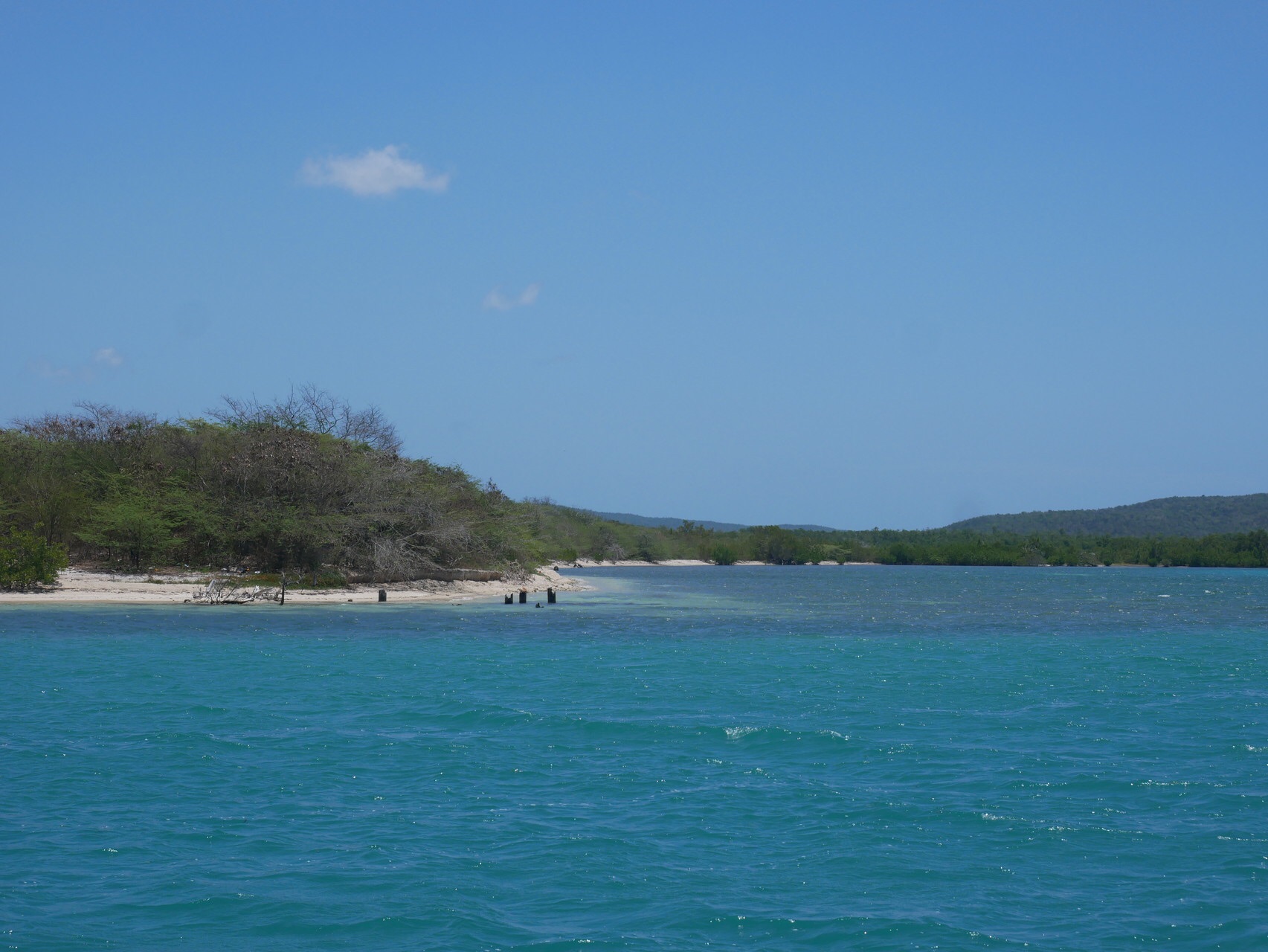Today I attended a meeting with different stakeholders for the Greater Goat Island Management Plan 2019-2024. This plan will guide the management of the island as a wildlife sanctuary for the protection of endangered and endemic species. That sounds a little bit boring – I know. However, the story isn’t boring at all. It is a big success story.

A not long time ago I visited the Goat Islands by boat again, and I could have no better impression about the beauty of this small Islands. However, the first time I heard about them, is more than four years ago. I read an article about the negotiations between the Jamaican Government and the China Harbour Engineering Company (CHEC) about a 1,5 billion investment in a deep-sea port. I was a little bit puzzled, I have to confess.
Just some days before that article, some people of the Royal Jamaican Yacht Club told me that the whole Portland Bight is a protected area.
Therefore how was that even possible?
Negotiations about such a massive investment with unpredictable environmental impact for the wildlife in that area?
Where can I find Greater Goat Island?
The Goat Islands are located off the southern coast of St. Catherine at 17° 52’33”N, and 77° 3’31”W. They are two limestone cays, Little and Great Goat Island, and part of the Portland Bight Protected Area (PBPA). PBPA was designated a protected 1999 under the Natural Resources Conservation Authority (NRCA). The Goat Islands are bordered to the north by the Galleon Harbour Special Fishery Conservation Area, which is abutted by a Ramsar site, designated due to its status as Jamaica’s largest contiguous mangrove stand spanning 8,000 ha. They measure 535 ha in area, with a perimeter of 12,260 m (Island Conservation, 2008).
What is there importance?
The PBPA is home to the largest contiguous dry limestone forest in Central America and the West Indies, the Hellshire Hills. For examples it shares a similar landscape to the adjacent Goat Islands. You casn find there dry forest, mangroves, wetlands, seagrass, coral reef and caves
A study, conducted in 2013, reported that 418 plant species were present, from invasive weeds to endemic species, 17 of which are of conservation concern. The area is home for the Jamaican Iguana, Jamaican Yellow Boa, Jamaican Skink, Blue-tailed Galliwasp, American crocodile and West India Manatee other wildlife.
Above all it is also home to the island’s largest system of mangroves, comprised of Red (Rhizophora mangle), Black (Avicennia germinans) and White (Laguncularia racemosa) mangroves, covering over 8,000 ha (Ramsar Convention Secretariat, 2018)
Hover to see what it is
History
The islands can look back on a long history. Historically, they are mentioned for the first time in a letter of the Governor of Jamaica to the King of Spain in 1601.
During the Second World War, Jamaica and the USA agreed on a 99-year lease because the location was considered to be strategically important. However, little or nothing happened there and so the islands, which returned to Jamaica in 2013, remained calm for a long time.
Then, as already mentioned, started the negotiations with the Chinese about the constrcution of a transshipment port. Thank God, they were not successfully concluded or were successful to the extent that they ended.
In 2016, negotiations ended and the project was dissolved. In the following year, 2017 the UDC (Urban Development Corporation) agreed to manage the Great Goat Island as a wildlife sanctuary together with the NEPA (National Environment and Planning Agency) to facilitate the reintroduction of threatened endemic species.

